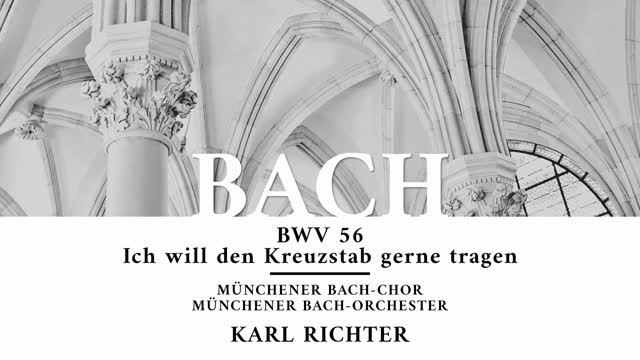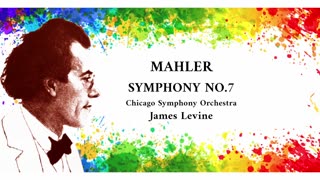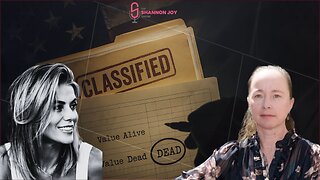Premium Only Content

Cantata BWV 56, Ich will den Kreuzstab gerne tragen - Johann Sebastian Bach 'Karl Richter'
🎻Enjoy the music. Please Follow, like & Comment, this is immensely appreciated 🎻
Composition Year: 1726 in Leipzig
First Performance: 1726-10-27 in Leipzig
Dedication: 19th Sunday after Trinity
Recorded: München, Herkulessaal, 7/1969
Recording quality: High
~
Performers: Dietrich Fischer-Dieskau - Bass • Manfred Clement (Oboe) Continuo • Walter Nothas (Violoncello) • Franz Ortner (Double-bass) • Karl Robingen (Bassoon)
Münchener Bach-Chor • Münchener Bach-Orchester • Karl Richter - Dirigent
~
00:01 1. Aria (bass): Ich will den Kreuzstab gerne tragen
08:40 2. Recitative (bass): Mein Wandel auf der Welt
10:51 3. Aria (bass): Endlich, endlich wird mein Joch
17:33 4. Recitative and Arioso (bass): Ich stehe fertig und bereit
19:34 5. Chorale: Komm, o Tod, du Schlafes Bruder
~
Work:
Ich will den Kreuzstab gerne tragen (lit. '"I will gladly carry the cross-staff"'), BWV 56, is a church cantata which Johann Sebastian Bach composed for the 19th Sunday after Trinity. It was first performed in Leipzig on 27 October 1726, and is part of Bach's third cantata cycle. The composition is a solo cantata (German: Solokantate) because it requires only a single vocal soloist, in this case a bass. Bach rarely used the word cantata to refer to a composition, and only for solo cantatas: the autograph score of BWV 56 is one of a few cases where he did.
The text, by Christoph Birkmann, describes the Christian life as a voluntary journey "carrying the cross" as a follower of Jesus. The text refers indirectly to the prescribed Gospel reading, which says that Jesus traveled by boat. The poet compares life to a sea voyage, and at the end yearns for death as the ultimate destination. This final desire for death is reinforced by the closing chorale: the stanza "Komm, o Tod, du Schlafes Bruder" ("Come, o death, you brother of sleep") from Johann Franck's 1653 hymn "Du, o schönes Weltgebäude", which also uses the imagery of a sea voyage.
Bach composed the cantata in his fourth year as Thomaskantor in Leipzig. He structured it in five movements, alternating arias and recitatives for a bass soloist, and closing with a four-part chorale. He scored the work for a Baroque instrumental ensemble of three woodwind instruments (two oboes and taille), three string instruments (two violins and a viola) and continuo. An obbligato cello features in the first recitative and an obbligato oboe in the second aria, resulting in different timbres in the four movements for the same voice part.
The autograph score and the performance parts are held by the Berlin State Library. The cantata was published in 1863 in volume 12 of the Bach-Gesellschaft Ausgabe (BGA), edited by Wilhelm Rust. The Neue Bach-Ausgabe (NBA) published the score in 1990, edited by Matthias Wendt. A critical edition was published by Carus-Verlag in 1999 as part of Stuttgarter Bach-Ausgaben.
~
https://www.bach-cantatas.com
~
***
If you have the means and desire to contribute to this channel, you can Buy Me a Tea - https://ko-fi.com/classicalmusicpd
***
~
ATTRIBUTION
Music contained in this video is licensed by Archiv Produktion, 1969.
-
 1:20:22
1:20:22
Classical Music P.D.
2 years agoSymphonie No.7, in E minor - Gustav Mahler 'Levine'
141 -
 LIVE
LIVE
Viss
1 hour ago🔴LIVE - Stacking Wins is What We Do! - PUBG Tactics 101
99 watching -
 LIVE
LIVE
The Charlie Kirk Show
55 minutes agoShould Taylor Swift Submit? + What's Wrong In Minneapolis? + MAHA vs. CDC | 8.28.2025
2,730 watching -
 LIVE
LIVE
Law&Crime
4 hours ago $1.23 earnedLIVE: Adelson Matriarch Murder Trial — FL v. Donna Adelson — Day 5
746 watching -
 LIVE
LIVE
The Mel K Show
1 hour agoMORNINGS WITH MEL K - Refusing the Lie & Standing Firmly for Truth 8-28-25
591 watching -
 LIVE
LIVE
The Shannon Joy Show
2 hours ago🔥🔥BREAKING: FOIA’d Government Docs Reveal American Citizens Might Be Worth More DEAD Than Alive. Exclusive With Sasha Latypova! 🔥🔥
217 watching -
 LIVE
LIVE
Trumpet Daily
1 hour agoTrumpet Daily LIVE | Aug. 28, 2025
434 watching -
 37:36
37:36
Nikko Ortiz
2 hours agoLive - Reaction Time, News, Politics, and More!
12.5K -
 1:02:26
1:02:26
VINCE
4 hours agoTragedy In Minneapolis | Episode 113 - 08/28/25
171K185 -
 LIVE
LIVE
Reidboyy
2 hours agoHow To Make $$$ in Delta Force Console Operations!
27 watching